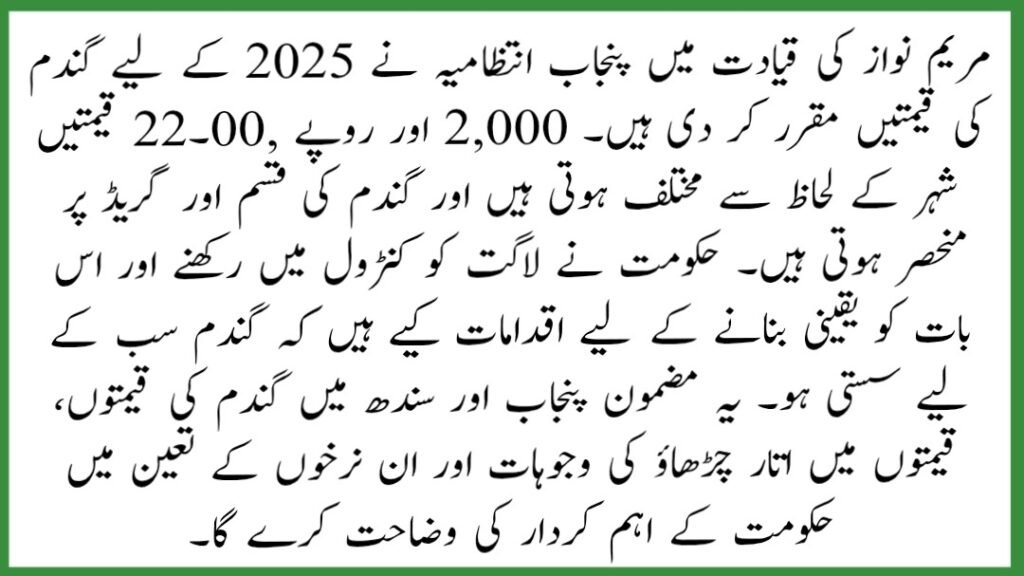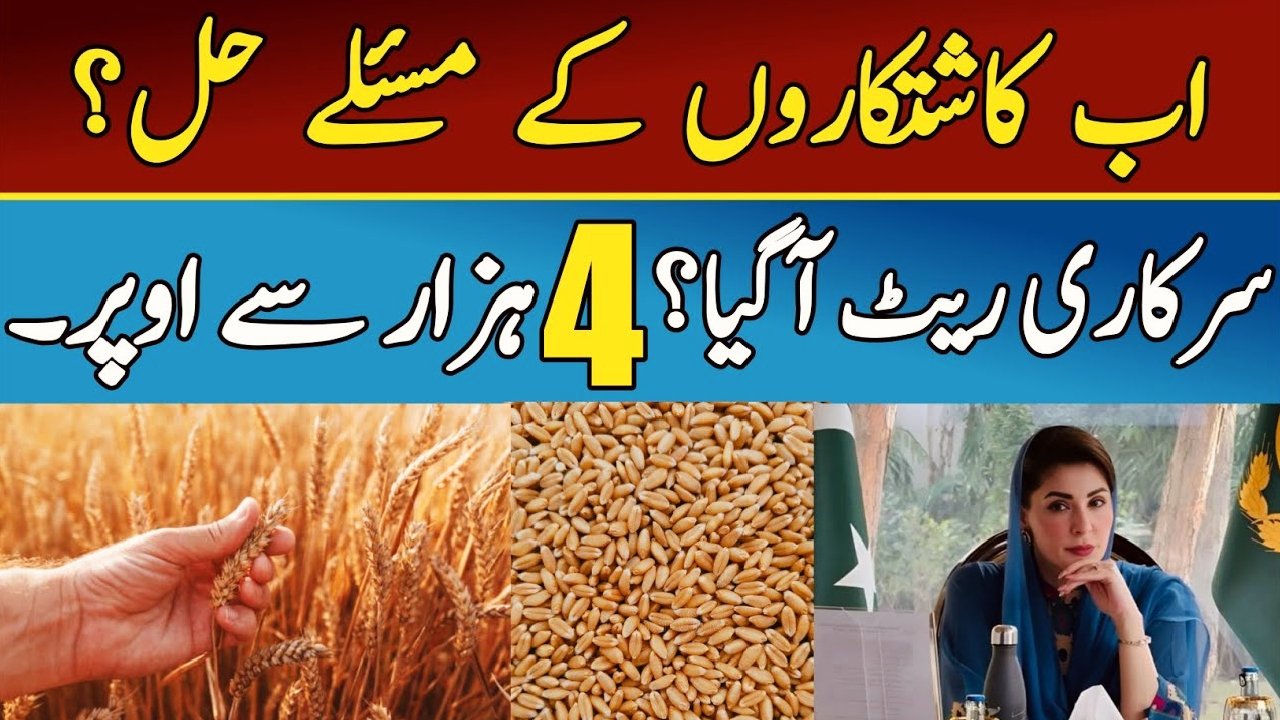The Punjab administration, led by Maryam Nawaz, has established wheat prices for 2025. A 40-kg wheat bag in Pakistan costs between Rs. 2,000 and Rs. 2,200. Prices vary by city and depend on the type and grade of wheat. The government has taken initiatives to keep costs under control and ensure that wheat is affordable to everyone. This article will explain wheat prices in Punjab and Sindh, the reasons for price fluctuations, and the government’s critical role in setting these rates.
| Point | Details |
| Average Wheat Price | Rs. 2,000 to Rs. 2,200 per 40 kg bag |
| Punjab Prices Example | Lahore: Rs. 2,020–2,120; Multan: Rs. 2,070–2,100; Nankana Sahib: from Rs. 2,000 |
| Sindh Prices Example | Karachi: up to Rs. 2,100; Tando Adam: Rs. 2,130; Sukkur: from Rs. 2,000 |
| Price Factors | Quality, transport costs, city demand, government regulation |
Wheat Price in Punjab 2025 – Per 40 Kg Bag
Maryam Nawaz government has released the Punjab wheat price for 2025. Prices vary among cities. In Lahore, wheat bag of 40 kg costs between Rs. 2,020 and Rs. 2,120. In Multan, the price ranges from Rs. 2,070 to Rs. 2,100. Nankana Sahib offers the lowest prices, beginning at Rs. 2,000. These costs fluctuate depending on the type of wheat and the demand for it. The government monitors the market and modifies rates to assist growers and buyers.

See also: Asaan Karobar Card Apply Online
Wheat Price in Sindh 2025 – Per 40 Kg Bag
- Price Difference in Sindh: Wheat prices in Sindh are slightly different from Punjab.
- Karachi Wheat Rate: Karachi has high prices, up to Rs. 2,100 for a 40 kg bag.
- Tando Adam Rate: Tando Adam has the highest rate in Sindh at Rs. 2,130.
- Lower Rates in Some Cities: Sukkur and Larkana have lower prices, starting from Rs. 2,000.
- Factors Affecting Price: Prices change due to transport costs, wheat quality, and demand.
- Government Support: The Sindh government uses policies to control prices and help people.
Factors Affecting Wheat Price in Pakistan 2025
There are numerous reasons why wheat prices fluctuate in Pakistan. First, government regulations and support programs determine how much wheat is sold for. Second, if demand is great and supply is low, prices will rise. Third, cities located far from farms have higher pricing due to transportation costs. Fourth, higher-quality wheat always costs more. The Maryam Nawaz government monitors these things on a regular basis to ensure that pricing remain fair for all.
See also: Asaan Karobar Card Apply Online
Main reasons include:
- Government control over prices
- High demand in cities
- Transportation from farms to cities
- Better quality means higher cost
Role of Maryam Nawaz Govt in Wheat Price Regulation
Wheat prices are heavily influenced by the Punjab administration, which is led by Maryam Nawaz. They assess the market conditions, supplier chain, and farming costs. Their purpose is to aid both farmers and ordinary people. By regulating prices within a reasonable range, the government prevents private traders from asking for too much money. The food department monitors prices and ensures that dealers adhere to the official rate list.
Wheat Quality and Its Impact on Price
Not all wheat is the same. Some varieties have greater taste and quality. These high-quality varieties are utilized in baking or for export. Because of this, they are more expensive. People in large cities like Lahore and Karachi demand more quality wheat, thus the price rises accordingly. In smaller cities or villages, people use regular wheat, which is less expensive. The price also changes if wheat is cleaned or packed well.
Why Do Prices Change Between Cities?
Cities have various pricing based on distance, demand, and supply. If a city is located far from wheat-growing areas, transportation costs increase. Large cities such as Karachi and Lahore require more wheat, therefore prices rise. Furthermore, if customers buy more, vendors may charge more. The government monitors all of these factors to ensure that prices do not become too high. In some regions, local variables influence how much wheat is sold for.
Conclusion
In this essay, we will discuss all of the data about wheat prices in Pakistan in 2025 under the Maryam Nawaz government. The price of a wheat bag of 40 kg ranges from Rs. 2,000 to Rs. 2,200, depending on the city, wheat quality, and transportation. The Punjab and Sindh governments continue to monitor these tariffs to ensure that farmers and citizens receive fair pricing.
FAQs
Q1: Why is wheat more expensive in Karachi than in other cities?
Wheat is more costly in Karachi due to higher transport costs and increased demand in large cities.
Q2: Does the government provide any subsidy on wheat prices?
The Punjab government regulates prices, but the article does not mention any direct subsidy programs for 2025.
Q3: How often do wheat prices change in Pakistan?
Prices can change weekly or monthly depending on market supply, demand, and seasonal changes.
Q4: Are these wheat prices the same in all parts of Pakistan?
No, wheat prices vary by city and province due to quality, distance, and local market demand.

